I am trying to make two scatter plots using matplotlib with the same color bar and scheme. Here is my code for creating the data,
import numpy as np
import matplotlib.pyplot as plt
import random
x = np.arange(0,10)
y = np.arange(0,10)
actual = np.zeros(10, )
predicted = np.zeros(10, )
for i in range(10):
actual[i] = random.choice([1, 2, 3, 4])
predicted[i] = random.choice([0, 1, 3])
I then create the first scatter plot,
plt.scatter(x, y, c=actual)
cbar = plt.colorbar(ticks=[1, 2, 3, 4])
cbar.ax.set_yticklabels(["b", "c", "d", "e"])
And the second scatter plot,
plt.scatter(x, y, c=predicted)
cbar = plt.colorbar(ticks=[0, 1, 2, 3])
cbar.ax.set_yticklabels(["a", "b", "c", "d"])
I want to create both the scatter plots with the same color bar, i.e. ticks=[0,1,2,3,4], labels as ["a", "b", "c", "d", "e"], and same colors corresponding to each tick/label. However, I am unable to do so. For example, doing this for the second plot leaves the colorbar unchanged as the c variable only contains 0, 1, and 3, but not 2 and 4. Any ideas?


